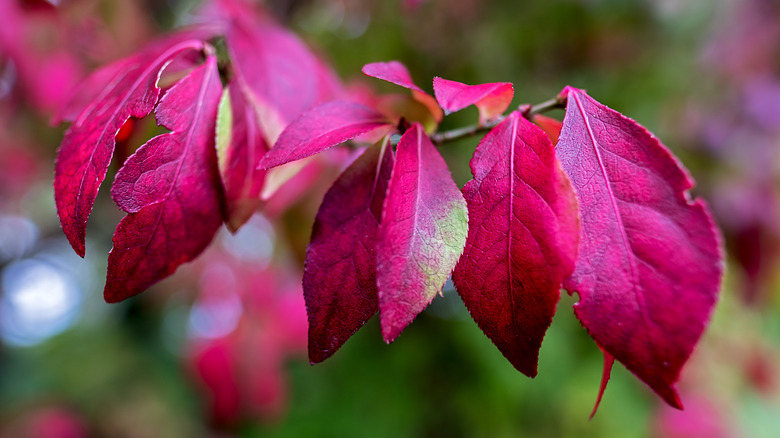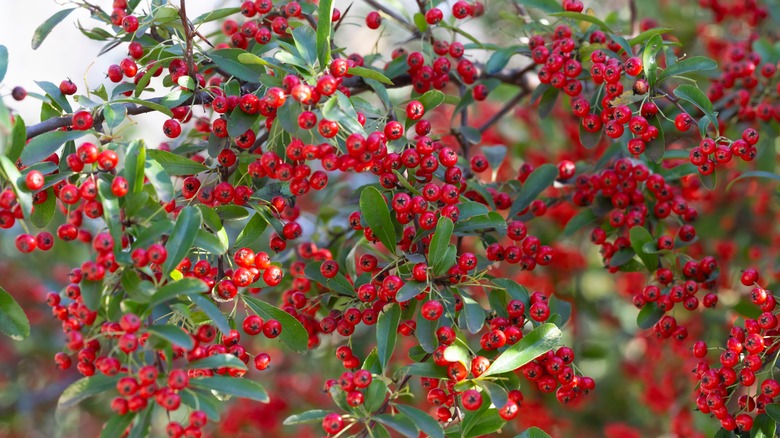Garden Trees, Shrubs & Vines
V Bawa
Burning bush (Euonymus alatus) is a native Asian shrub that’s found today in 25 states, specifically in the Midwest and eastern states like Massachusetts, Delaware, and Pennsylvania. While the burning bush can add brilliant decoration to a garden thanks to its bright, fiery colors, the shrub is also recognized as an invasive species (in 21 states) due to its ability to push out native plants and disrupt local ecosystems (via Brandywine Conservancy). For this reason, in states like Massachusetts, the burning bush shrub is banned.
The Bay State declared the burning bush invasive in 2005 and officially banned its importation in 2006. Three years later, Massachusetts also banned the propagation of the shrub. If you currently have a burning bush shrub in your Massachusetts home or find that it’s banned in the state you’re in, you’re strongly encouraged to remove it or at least control its spread.
The right way to use the shrub

Anneliese Gruenwald-maerkl/Getty Images
As mentioned, burning bush shrubs can disturb the order of your local ecosystem and cause biodiversity loss. It’s also named the “burning bush” because it can be a fire hazard due to its oils, which can ignite and burn. People still plant it, however (in states where the sale of it isn’t banned, as it is in Massachusetts and New Hampshire) because of its beautiful foliage that can add visual interest to a landscape. The burning bush is also easy to grow, low maintenance, and highly adaptable to various soil, light, and weather conditions.
If you need to fill up a space in your garden, the shrub is a great option because of how big it gets. It’s also a hedge plant, which means you can create a fence, boundary, or enclosure by planting a few burning bush shrubs together. If you want to plant it, it’s best in areas where there aren’t other plants for it to spread to and overpower. Also note that it attracts wildlife and is unsafe to digest by humans, cats, dogs, and horses.
Better substitutes to the burning bush

AnnaNel/Shutterstock
The burning bush shrub became a popular ornamental plant when it arrived in North America in the 19th century due to its fiery appearance and growth capacity. It can grow up to 15 feet tall, has showy flowers, leaves, and seeds, and is also known as “winged euonymus” because of its winged stems. Because the burning bush grows and spreads quickly and densely, however, it dominates whatever environment it’s in by taking resources that would go toward other plants. This is why it’s better to substitute it for plants that won’t be as competitive if it’s in a garden.
Given the burning bush’s ban in states like Massachusetts, as well as its invasive status in more than 20 U.S. states, some better alternatives to the shrub include ninebark, highbush blueberry, red chokeberry, redvein enkianthus, and Virginia sweet spire. Highbush blueberry is also a hedge plant and grows up to 12 feet in height and width. Redvein enkianthus can grow up to 6 feet in width and 8 feet in height and can supply you with various bright shades in the fall.



